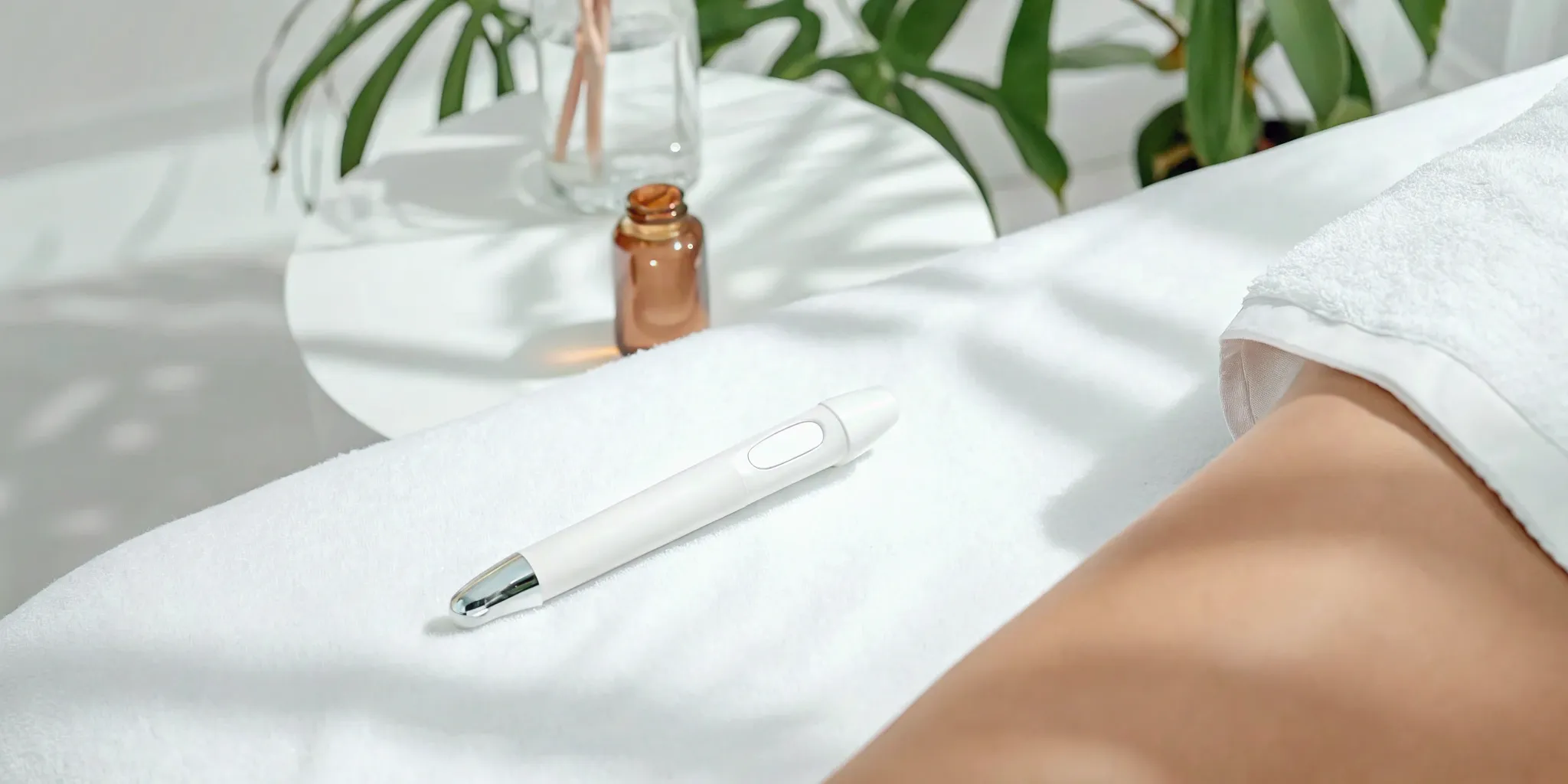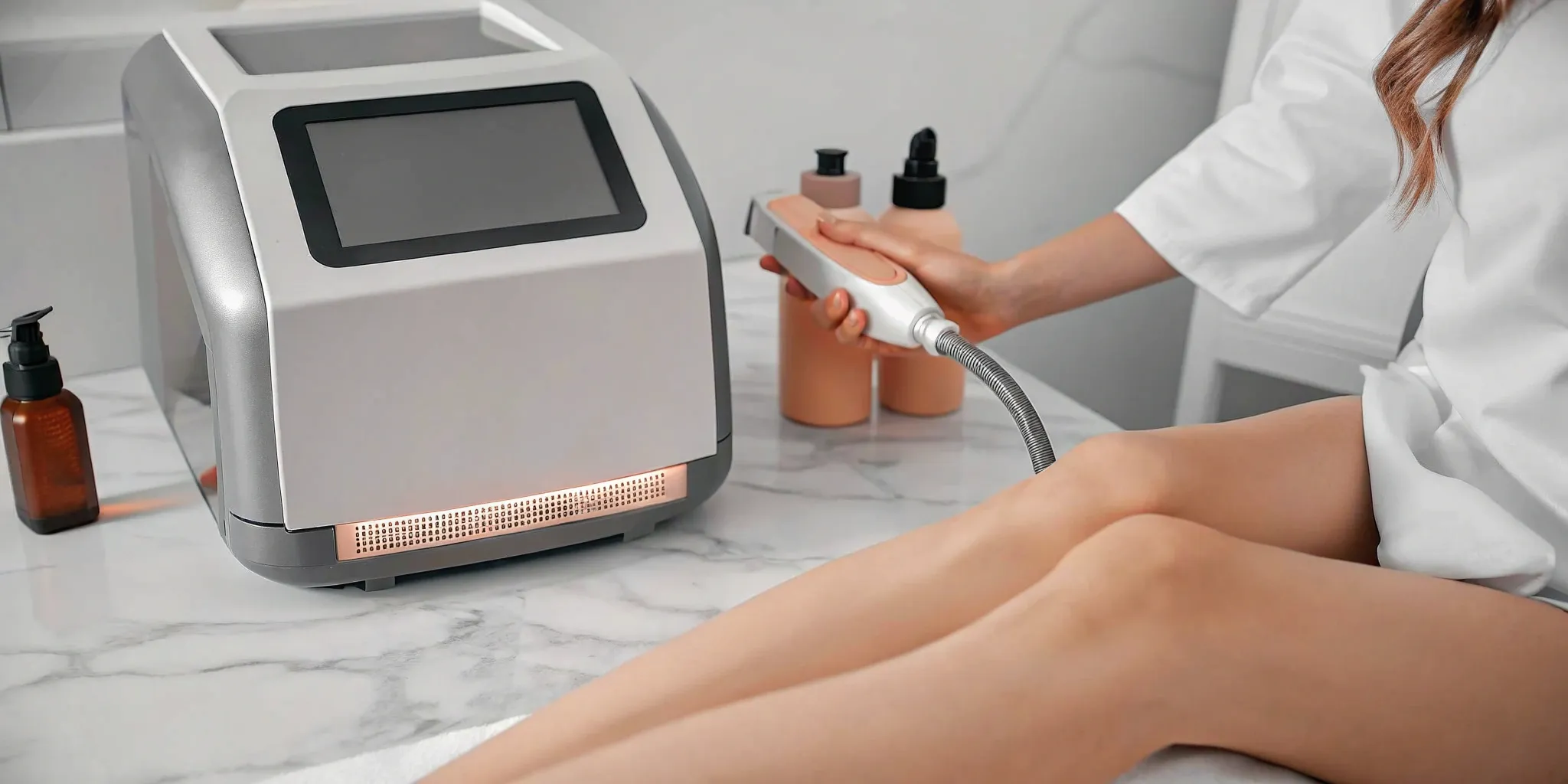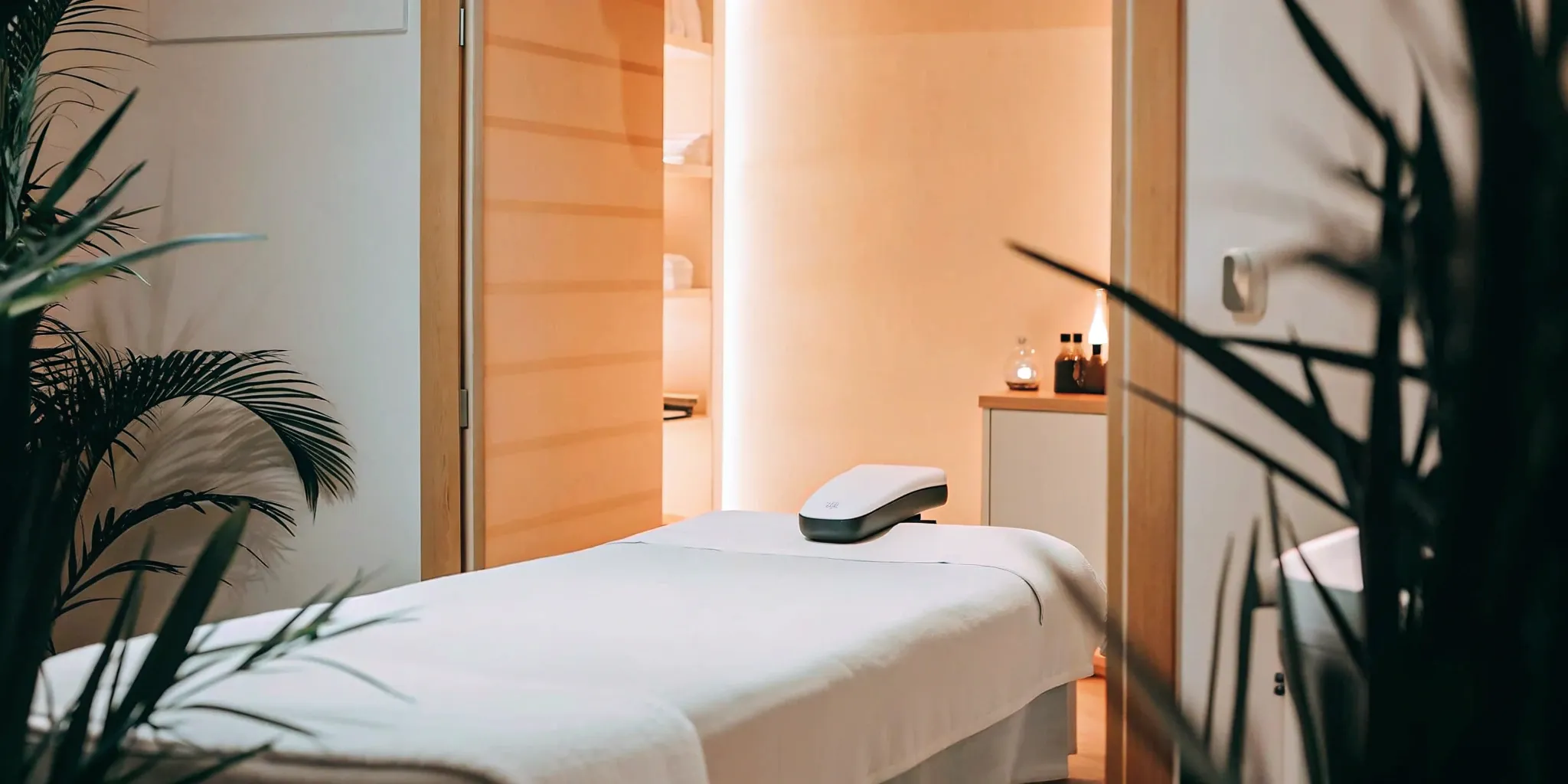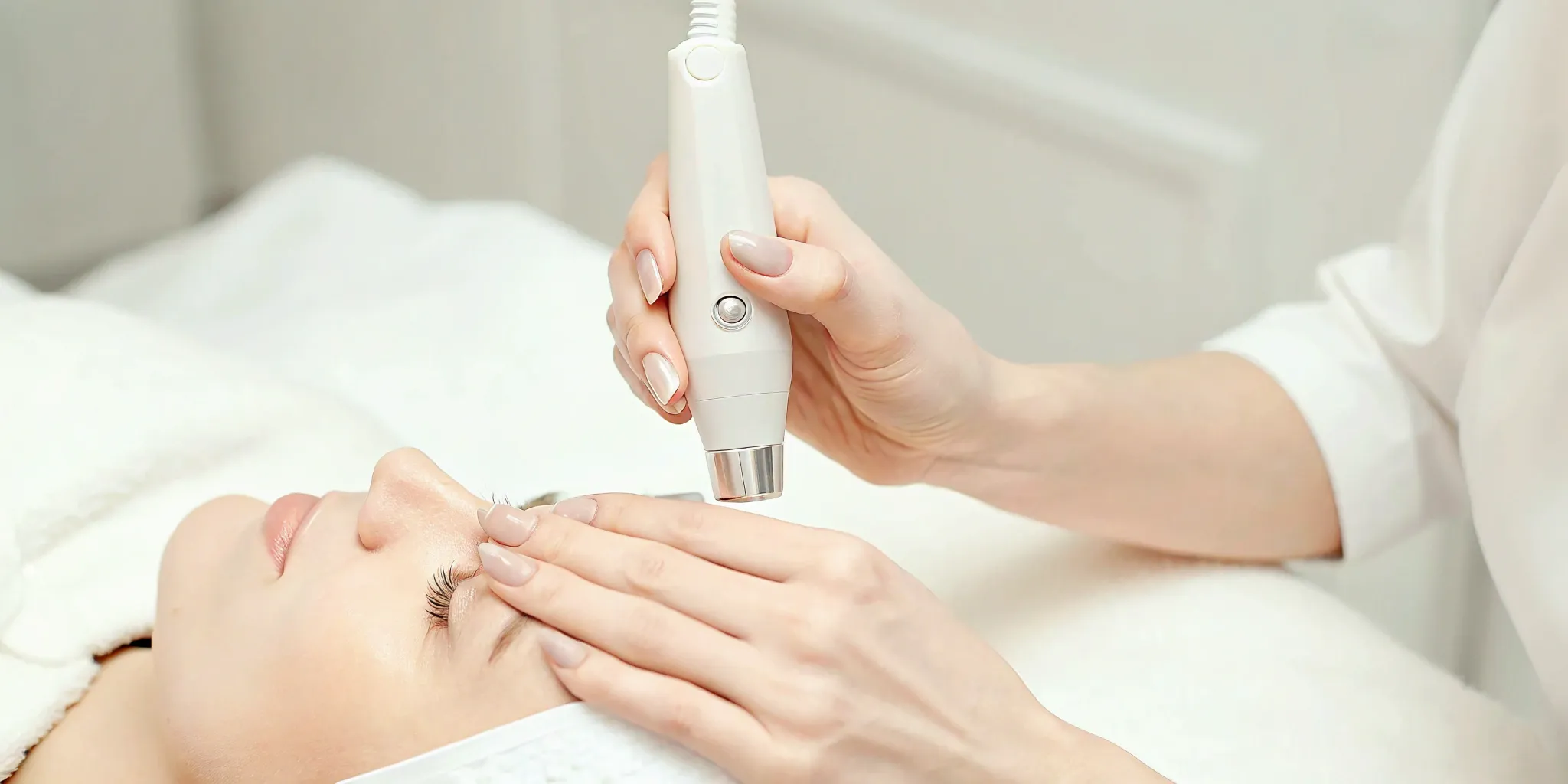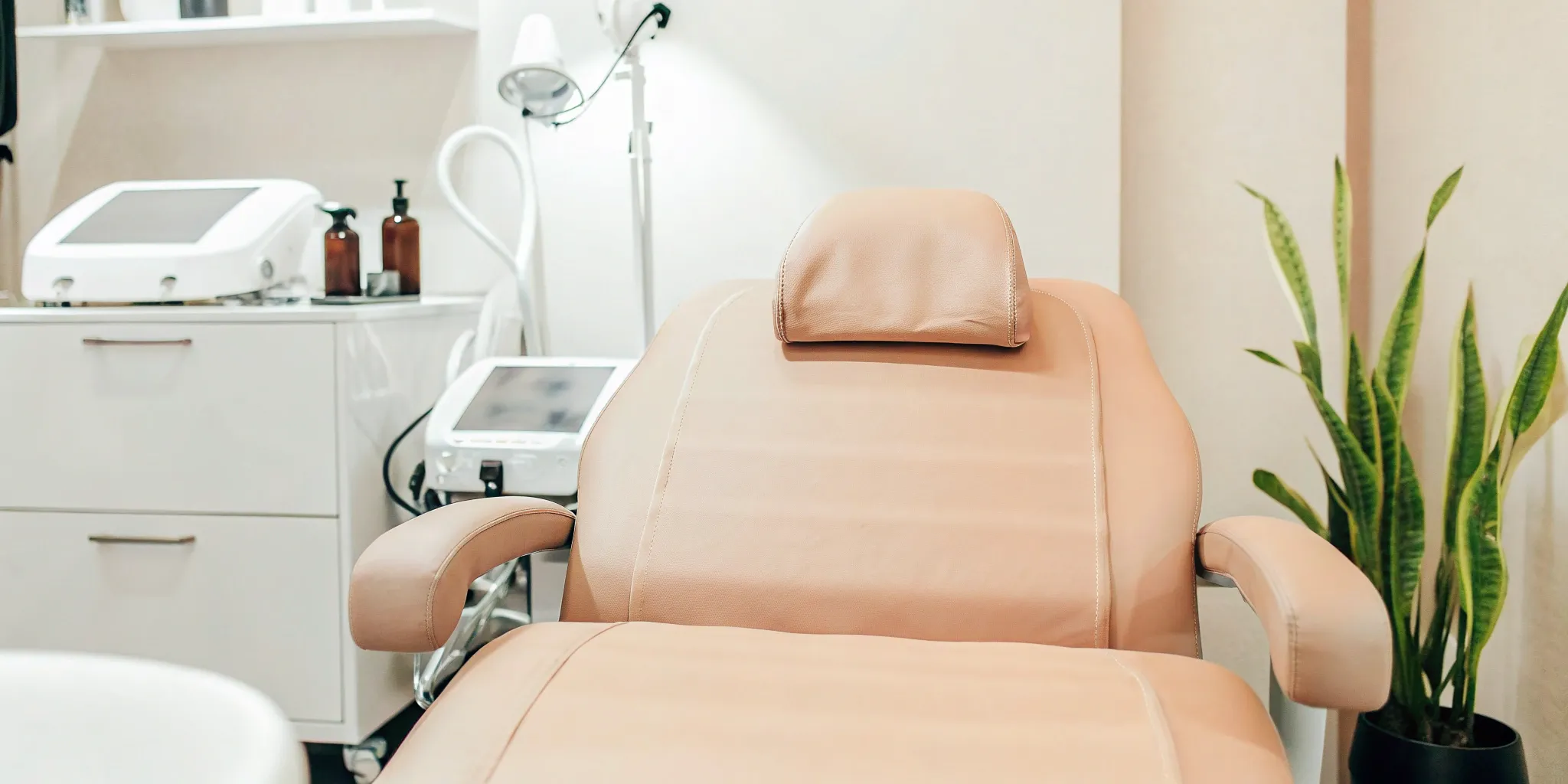That tattoo you got years ago might not feel like the right fit anymore. Tastes change, life moves on, and sometimes the art on our skin doesn’t reflect who we are today. If you’re considering a clean slate, you’ve probably found yourself wondering about the process of tattoo removal. It can feel like a big, mysterious step, filled with questions about pain, cost, and what the final results will actually look like. This guide is here to clear up the confusion. We’ll walk you through everything from how the technology works with your body to what you can expect during your sessions and how to care for your skin afterward.
Key Takeaways
- Laser Removal is a Gradual Fading Process: The treatment uses focused light to break ink into tiny particles that your body’s immune system naturally flushes out. This is why patience and a commitment to multiple sessions are essential for achieving clear skin.
- Proper Aftercare Directly Impacts Your Results: How you care for your skin between sessions is just as important as the treatment itself. Following your provider’s instructions on sun protection and cleanliness is the best way to prevent complications and ensure smooth healing.
- Your Provider’s Expertise is Key to Success: Don’t compromise on quality when it comes to your skin. Choosing a certified professional at a reputable medical spa ensures you receive a safe, effective treatment tailored to your specific tattoo and skin type.
What is Tattoo Removal?
Tattoo removal is the process of clearing permanent ink from your skin. Maybe that dragon on your back doesn’t feel like you anymore, or perhaps you’re just ready for a clean slate. Whatever your reason, the goal is the same: to break down the ink that was designed to last forever. Think of it as a do-over for your skin. The process involves specific treatments that target the ink particles, allowing your body to gradually flush them away.
While there are a few different methods out there, laser tattoo removal has become the gold standard for a reason. It’s known for being the safest and most effective way to fade and eliminate unwanted tattoos without significantly damaging the surrounding skin. Unlike older, more abrasive methods, modern lasers can selectively target ink pigments while leaving your skin cells largely untouched. This precision is key to achieving clear results with minimal risk. It’s not a one-and-done deal; it requires a series of sessions spaced out over time to allow your body to process and remove the fragmented ink. But with patience and the right professional care, you can see incredible results and reclaim your skin.
Why Are Tattoos Permanent?
Ever wonder why a tattoo doesn’t just wash off or fade away like a temporary one? It’s all about how deep the ink goes. When you get a tattoo, the needles deposit ink into the dermis, the layer of skin below the surface. Your body’s immune system immediately recognizes these ink particles as foreign invaders and sends white blood cells to attack them. The problem is, the ink particles are too large for these cells to break down and carry away. So, your immune system essentially walls them off, which is why the tattoo stays put permanently.
Your Tattoo Removal Options
When it comes to saying goodbye to old ink, you have a few choices. The most common and trusted method is laser tattoo removal. This technique uses highly concentrated light beams to heat up and shatter the ink particles into tiny fragments that your body can finally flush out. Other, more invasive options include dermabrasion, which sands down the skin’s top layers, and surgical excision, where the tattooed skin is cut out. However, these methods are less common today because they carry a higher risk of scarring. For most people, laser treatment offers the best balance of safety and effectiveness.
Is Tattoo Removal Right for You?
The best candidates for tattoo removal are people in good overall health who have realistic expectations about the process. Your skin type, the tattoo’s age, its colors, and its location all play a role in the final outcome. It’s also important to understand that it’s a journey that requires commitment to multiple sessions and proper aftercare. The first and most important step is to schedule a consultation with a qualified professional. We can assess your tattoo, answer your questions, and create a personalized treatment plan that’s right for you and your skin.
How Laser Tattoo Removal Works
If you’ve ever wondered how a tattoo, designed to be permanent, can actually be removed, the answer lies in a pretty amazing partnership between advanced technology and your own body. Laser tattoo removal isn’t like using an eraser; it’s a gradual fading process that breaks down the ink so your body can naturally clear it away. Think of it less as removal and more as assisting your body in doing what it already knows how to do: clean house.
The process uses highly concentrated pulses of light energy to target the ink particles embedded in your skin. This energy passes harmlessly through the top layers of your skin to be absorbed by the tattoo pigment. This absorption is key—it’s what shatters the ink into microscopic fragments. Over the course of several weeks following each treatment, your body’s immune system gets to work, flushing away these tiny particles and causing the tattoo to fade. It’s a sophisticated and effective method, and when performed by a trained professional, it’s the gold standard for getting rid of unwanted ink. Our team specializes in laser tattoo removal and can guide you through every step of the process.
Breaking Down the Ink
So, what’s happening under your skin? Imagine your tattoo ink is like a collection of large rocks. Your body can’t easily move them, which is why the tattoo is permanent. The laser acts like a high-powered hammer, sending a rapid pulse of energy that shatters those rocks into tiny pebbles. Once the ink particles are small enough, your body’s white blood cells, the natural cleanup crew of your immune system, can finally grab onto them and carry them away through the lymphatic system. This is why you don’t see results overnight—it takes time for your body to do its job after the laser has done its part.
The Different Types of Lasers
Not all tattoos are created equal, and neither are the lasers used to remove them. Different ink colors absorb different wavelengths of light. For example, a laser that’s effective on black ink won’t have the same impact on a light blue or green pigment. That’s why professional clinics use state-of-the-art laser systems that can be adjusted to target a full spectrum of colors. At Ultimate Image MedSpa, we use advanced technology to ensure we can effectively treat the specific colors in your tattoo. This tailored approach is crucial for achieving the best possible results and is a key part of our comprehensive aesthetic services.
What Affects Your Results
Several factors influence how quickly and effectively your tattoo can be removed. The age of your tattoo, its size, and the colors used all play a significant role. Older tattoos often fade faster because the body has already had years to break down some of the ink. Black ink is generally the easiest to remove because it absorbs all laser wavelengths, while lighter, brighter colors like greens and blues can be more stubborn. Your skin tone and the location of the tattoo also matter. Tattoos on areas with better circulation, like your torso, tend to fade more quickly than those on your hands or feet. During a consultation, we can assess your specific tattoo and give you a realistic idea of what to expect.
What to Expect During Your Sessions
Deciding to remove a tattoo is a big step, and it’s natural to have questions about what the process actually involves. Knowing what’s ahead can make the entire experience feel more comfortable and straightforward. The journey to clear skin is a marathon, not a sprint, involving a series of treatments spaced out over time. Each session builds on the last, gradually fading the ink until you achieve your desired results.
From your very first meeting with a specialist to managing comfort during the procedure and understanding the recovery, every phase is designed with your safety and goals in mind. We’ll walk through what a typical laser tattoo removal journey looks like. This includes the initial consultation where your personalized plan is created, what the laser treatment itself feels like, how many sessions you might need, and the importance of setting realistic goals for your final outcome. Being well-informed is the best way to feel confident and positive as you begin.
The First Consultation
Your tattoo removal journey begins with a one-on-one consultation. This initial meeting is essential for creating a treatment plan that’s tailored specifically to you and your tattoo. During this session, a trained specialist will examine your tattoo, considering its size, location, colors, and age. They’ll also discuss your medical history to ensure you’re a good candidate for the procedure. This is your opportunity to ask any questions you have and get a clear understanding of the process, timeline, and costs. Think of it as a strategy session where you and your provider map out the best path to achieving clear skin. You can contact us to schedule your first consultation and get started.
Managing Pain and Comfort
One of the most common questions is, “Will it hurt?” The sensation of laser tattoo removal is often compared to a rubber band snapping against the skin. While it can be uncomfortable, most people find it manageable—and often less painful than getting the tattoo in the first place. The good news is that the treatments are very quick, often lasting just a few minutes. To ensure you’re as comfortable as possible, your provider may apply a topical numbing cream or use other cooling methods to soothe the skin during the procedure. Your comfort is a top priority, so don’t hesitate to discuss pain management options with your specialist.
How Many Sessions Will You Need?
Tattoo removal is a gradual process that requires multiple sessions. This is because tattoo ink is layered within the skin, and the laser needs to break down each layer over time. Your body’s immune system then works to flush away the tiny ink particles between treatments. Most people need between 6 and 12 sessions to see significant fading or complete removal, though this can vary. Factors like the tattoo’s age, ink colors, and your skin type all play a role in your treatment timeline. Your provider will give you a more personalized estimate during your consultation.
Setting Realistic Expectations
While laser technology has come a long way, it’s important to have realistic expectations. Tattoos are designed to be permanent, so completely erasing them can be challenging. While many tattoos can be fully removed, some may leave behind faint traces of ink or slight changes in skin texture or color. The goal is to achieve the best possible result for your unique situation. A skilled provider will be transparent with you about what you can realistically expect. They can also discuss other skin treatments that may help improve your skin’s appearance after the removal process is complete.
Safety and Side Effects: What to Know
Thinking about safety is a completely normal and important part of the tattoo removal process. The good news is that when performed by a trained professional, laser tattoo removal is a very safe procedure. Still, knowing what to expect—both during and after your sessions—can help you feel more confident and prepared. Your body will go through a healing process as it flushes out the ink particles, and some temporary side effects are a natural part of that journey.
Understanding these potential effects helps you take the best possible care of your skin and ensures you get the smooth, clear results you’re looking for. It’s all about being informed so you can partner with your provider to make the process as seamless as possible. Let’s walk through what’s common, what’s rare, and what you can do to keep your skin healthy every step of the way.
Common Side Effects to Expect
After a laser session, your skin will need some time to heal. Most side effects are mild, temporary, and a sign that the treatment is working. You can expect some redness, swelling, and a feeling similar to a sunburn in the treated area. Many people also experience “frosting,” where the skin temporarily turns a chalky white right after the laser pulse—this is perfectly normal and fades quickly.
Blistering can also occur, especially in the first few sessions. While it might look a little alarming, it’s actually a positive sign that your immune system is actively working to remove the ink. It’s crucial not to pick at any blisters or scabs that form. You might also notice temporary lightening or darkening of your skin tone in the area, which typically resolves on its own over several months.
Rare but Possible Complications
While serious complications are uncommon, it’s good to be aware of them. The biggest risks, like scarring and infection, are almost always preventable by following proper aftercare instructions. An infection can happen if the treated area isn’t kept clean, but it’s rare for anyone with a healthy immune system. Scarring is also avoidable and usually only occurs if you pick at scabs or don’t protect your skin as it heals.
In very rare cases, some people may have an allergic reaction as the ink particles are broken down and absorbed by the body, particularly with red inks. It’s important to discuss your full medical history with your provider so they can assess any potential risks.
How to Prevent Complications
Your role in the tattoo removal process is just as important as your technician’s. The single best way to prevent complications is to follow your aftercare instructions to the letter. This means keeping the area clean and dry, applying any recommended ointments, and avoiding sun exposure, which can interfere with healing and cause skin discoloration.
Choosing a reputable clinic with experienced, certified technicians is also critical. A skilled professional will use the correct laser settings for your skin type and tattoo, significantly reducing the risk of unwanted side effects. They will also provide you with clear, detailed aftercare guidelines to ensure your skin heals beautifully.
Why Professional Removal is Safest
When it comes to your skin, you should never cut corners. Professional laser tattoo removal in a medically supervised setting is by far the safest and most effective option. Trained experts understand the nuances of how different skin types and ink colors react to the laser. They can adjust the treatment to protect your skin while maximizing results.
Attempting DIY removal methods or going to an unlicensed provider can lead to permanent scarring, skin damage, and poor results. A professional clinic not only provides a safe environment but also has the expertise to manage any side effects that may arise. If you’re ready to start your journey with a team you can trust, you can schedule a consultation to discuss a personalized treatment plan.
Breaking Down the Cost of Tattoo Removal
Let’s talk about one of the biggest questions on everyone’s mind: how much does tattoo removal cost? It’s smart to think about the financial side of things before you begin. The total price isn’t a single, flat fee but rather an investment spread across multiple sessions.
The final cost of your laser tattoo removal depends entirely on your unique situation—your tattoo, your skin, and your goals. While it might seem complicated, understanding the factors that go into the pricing can give you a much clearer picture. The best way to get an accurate estimate is always through a professional consultation, where a specialist can assess your tattoo and create a personalized treatment plan.
What Influences the Price
The cost of removing a tattoo isn’t one-size-fits-all because no two tattoos are exactly alike. Several key factors determine the total price of your treatment plan. The size of your tattoo is the most obvious one—a small wrist tattoo will cost less to remove than a full sleeve. The colors of the ink also play a big role; black ink is typically the easiest to remove, while vibrant colors like green and blue can be more stubborn and may require more sessions. Other factors include the age of the tattoo, the type of ink used, its location on your body, and your skin tone.
Average Cost Per Session
While the total cost varies, we can look at national averages to get a general idea. The average cost for a single laser tattoo removal session in the U.S. is around $350, but this can range from under $300 to over $600. Remember, this is just a ballpark figure. Your actual cost per session will depend on the factors we just discussed. During your consultation, we’ll give you a precise quote per session and an estimate of how many sessions you’ll likely need. This way, you can plan your budget without any surprises and feel confident moving forward with your treatment.
Your Payment and Financing Options
We understand that tattoo removal is an important investment, and we want to make it as accessible as possible. Many people find it helpful to spread the cost over time. At Ultimate Image MedSpa, we can discuss payment options that work for your budget. Additionally, many clients use financing solutions to cover their treatments. Options like CareCredit are specifically designed for health and wellness expenses, allowing you to pay in manageable monthly installments. Don’t hesitate to ask us about your options; we’re here to help you find a plan that fits your needs.
Does Insurance Cover Tattoo Removal?
This is a common question, and it’s important to have a clear answer from the start. Because tattoo removal is considered a cosmetic procedure—meaning it’s done for aesthetic reasons rather than medical necessity—it is almost never covered by health insurance plans. You should plan for the treatment to be an out-of-pocket expense. Knowing this upfront helps you budget accordingly and explore the payment and financing options that will make your tattoo removal journey smooth and stress-free. We believe in full transparency so you can focus on achieving the results you want.
How to Prepare for Your First Session
Getting ready for your first tattoo removal session is about more than just showing up for your appointment. A little preparation can make a big difference in your comfort, the effectiveness of the treatment, and how smoothly your skin recovers. By taking a few simple steps beforehand, you set yourself up for the best possible results and a more positive experience from start to finish. Think of it as a partnership between you and your technician—your prep work helps them do their job even better.
Medical and Health Considerations
Before you even book your first session, it’s essential to have a thorough consultation with a qualified professional. During this meeting, be ready to discuss your full medical history, including any skin conditions, allergies, or medications you’re taking. Certain conditions and drugs can affect how your skin reacts to the laser and its ability to heal. For example, you may need to pause antibiotics for a couple of weeks before treatment. Being open and honest allows your provider to create a safe and effective plan tailored just for you. This is your opportunity to ask questions and ensure you feel completely comfortable with the process.
Pre-Treatment Do’s and Don’ts
To get your skin ready for the laser, there are a few key things to keep in mind. First, avoid sun exposure, tanning beds, and spray tans on the treatment area for at least two weeks before your appointment, as tanned skin can increase the risk of side effects. It’s also important to steer clear of at-home removal creams; they are often ineffective and can cause skin irritation that complicates professional treatment. On the day of your session, make sure the area is clean, dry, and free of any lotions, oils, or fragrances. Following these simple guidelines helps ensure the laser can work as effectively as possible.
How to Choose the Right Provider
The single most important factor in your tattoo removal journey is choosing the right provider. You want a clinic with a proven track record and experienced, certified technicians who specialize in laser tattoo removal. Look for a professional medical spa that uses advanced, FDA-approved laser technology, as this directly impacts the safety and quality of your results. Don’t hesitate to ask to see before-and-after photos of their clients and read reviews. A reputable provider will always offer a detailed consultation to assess your tattoo, explain the process, and answer all your questions, ensuring you feel confident before moving forward.
Simple Lifestyle Adjustments to Make
Did you know your immune system is the real hero of tattoo removal? The laser breaks up the ink particles, but it’s your body that flushes them away. To help this process along, focus on healthy habits in the weeks leading up to your appointment. Staying well-hydrated is crucial, so drink plenty of water. Eating a balanced diet and getting enough sleep will also give your immune system the support it needs. If you smoke, consider cutting back or quitting, as smoking can constrict blood vessels and slow down the healing process. These small adjustments can make a noticeable difference in how quickly and effectively your tattoo fades.
Your Guide to Aftercare and Recovery
What you do after your laser tattoo removal session is just as important as the treatment itself. While our advanced lasers do the heavy lifting of breaking down the ink particles, your body handles the natural process of flushing them away. Proper aftercare is your way of supporting that process, helping your skin heal beautifully, preventing complications, and ensuring you get the best possible results. Think of it as a partnership between our technology and your commitment to recovery. By following a few simple guidelines, you can make your recovery smooth, comfortable, and effective.
This phase is all about giving your skin the best environment to repair itself. It involves simple but critical steps, from immediate soothing techniques to long-term protection from the sun. Neglecting aftercare can lead to slower healing, potential scarring, or less effective ink removal, which might mean more sessions than you originally planned. We want you to have a fantastic experience from start to finish, and that includes the time between your appointments. We’ll walk you through exactly what to do right after your session, how to protect your skin for the long haul, and why sticking to your treatment schedule is so crucial for fading that unwanted ink for good. Your diligence now will pay off in clear, healthy-looking skin later.
Right After Your Session: What to Do
Your skin will need a little TLC immediately following your appointment. The first step is to soothe the area. We recommend applying an ice pack to reduce any swelling or discomfort. Next, gently apply an antibiotic cream to keep the area clean and protected, then cover it with a bandage. This simple routine helps prevent infection and starts the healing process off right. You can shower the next day, but be very gentle with the treated skin—no scrubbing! Just let the water run over it and pat it dry carefully.
Protecting Your Skin for the Long Haul
Great long-term results depend on how you care for your skin between sessions. Sunscreen is your new best friend. Keep the treated area covered with a high-SPF sunscreen whenever you’re outdoors to protect it from sun damage, which can affect the healing process. It might be tempting, but avoid picking at any scabs or blisters that form. This is crucial for preventing scars. When you wash the area, use a gentle, fragrance-free antibacterial soap and lukewarm water. For the first 48 hours, it’s also a good idea to avoid hot tubs, saunas, and very hot showers.
Activities to Pause (and For How Long)
Giving your body a break is a key part of recovery. We advise skipping any strenuous exercise for at least 24 hours after your session. This helps minimize swelling and gives your skin a chance to begin healing without extra stress. It’s also important to let your body work its magic between appointments. Scheduling treatments too close together can increase the risk of unwanted side effects like scarring or changes in your skin’s texture. Patience is key here—giving your skin the time it needs to recover fully will lead to a much better outcome in the end.
The Importance of Follow-Up Visits
Following your recommended treatment schedule is essential for safely and effectively removing your tattoo. Your sessions will typically be spaced 8 to 12 weeks apart. This waiting period isn’t arbitrary; it gives your body the necessary time to break down and flush out the shattered ink particles and for your skin to heal completely. Sticking to this schedule ensures each of our services is as effective as possible. During your follow-up visits, we can track your progress and make any adjustments needed. Ready to plan your journey to clear skin? Contact us to schedule your initial consultation and create a personalized treatment plan.
Answering Your Top Questions
It’s completely normal to have a lot of questions before starting your tattoo removal journey. You’re making a big decision, and you deserve to have all the facts. Let’s walk through some of the most common questions we hear from clients so you can feel confident and prepared for what’s ahead.
How Successful is Laser Removal?
The good news is that laser tattoo removal is widely considered the most effective method available for getting rid of unwanted ink. For many people, it’s possible to completely remove a tattoo, regardless of its size or color. Modern laser technology is incredibly precise, targeting only the ink particles while leaving the surrounding skin untouched. The overall success depends on a few factors, like the tattoo’s age, the colors used, and your skin type, but in the hands of a skilled professional, the results can be truly impressive.
How is Pain Managed?
Let’s be honest: there can be some discomfort involved. Many people describe the sensation as similar to a rubber band snapping against the skin. However, you absolutely do not have to just grit your teeth and bear it. At a professional medspa, your comfort is a top priority. We can manage any pain by applying a topical numbing cream before the session begins or, in some cases, using local anesthetic injections. This makes the entire experience much more tolerable, allowing you to relax while the laser does its work.
What’s the Full Timeline?
Patience is key when it comes to tattoo removal. This isn’t a one-and-done procedure; it’s a gradual process that requires multiple sessions. Most people start to see significant fading after about three to five treatments. For a tattoo to be as clear as possible, it typically takes between eight and twelve sessions, spaced several weeks apart to allow your skin to heal. This means the full timeline can be a year or more. Think of it as a long-term commitment to revealing the clear skin you want.
What Will the Final Results Look Like?
The goal of every treatment is to achieve the clearest possible result. While many tattoos can be completely erased, it’s important to have realistic expectations. In some cases, especially with very dense or colorful tattoos, a faint shadow or a trace of pigment might remain. A thorough consultation with a specialist is the best way to understand what you can expect for your specific tattoo. They will assess your ink and skin to give you a personalized and honest outlook on your final results.
Ready to Start? Here’s How
Feeling ready to take the next step on your tattoo removal journey? It’s a big decision, and moving forward with confidence is key. Taking the time to find the right professional and understand your options will set you up for the best possible experience. Here’s a straightforward guide to get you started on the right foot.
Find a Qualified Provider
Your top priority should be finding a safe, experienced professional. Tattoo removal is a medical procedure, so it’s essential to go to a licensed or certified provider who can properly assess your skin and tattoo. Look for a clinic that specializes in laser treatments and has a proven track record of successful results. During your search, pay attention to the cleanliness of the facility, the technology they use, and the expertise of the staff. Don’t hesitate to ask about their qualifications and experience—a great provider will be happy to share them. When you’re ready, you can schedule a consultation with a trusted expert.
Explore Financial Assistance
It’s helpful to know that tattoo removal is considered a cosmetic procedure, which means health insurance typically doesn’t cover the cost. However, that doesn’t mean it’s out of reach. Many reputable medspas understand that this is an investment and offer ways to make it more manageable. Ask about available payment plans or financing options during your consultation. These programs can help spread the cost over time, fitting the treatments into your budget without causing financial stress. Getting clear on the financial side of things early on will allow you to focus on what really matters: achieving your desired results.
Other Helpful Resources
Before you commit, do a little homework to make sure you’ve found the perfect fit. A great place to start is by looking at a provider’s before-and-after photo gallery. This gives you a real-world look at their work and the kind of results you can expect from their laser tattoo removal services. Reading client reviews and testimonials can also offer valuable insight into the patient experience. Finally, prepare a list of questions for your consultation. Ask about the type of laser they use, what the aftercare process involves, and how many sessions they anticipate you’ll need. Being prepared helps you make an informed decision.
Related Articles
- Laser Tattoo Removal Treatment In Texas | Erase Your Ink
- Cheap Laser Tattoo Removal – Guide – Ultimate Image MedSpa
Frequently Asked Questions
Is laser tattoo removal more painful than getting the tattoo in the first place? This is probably the number one question I get, and it’s a fair one. Most people find the sensation uncomfortable but manageable, often describing it as a quick rubber band snap against the skin. The good news is that the treatments are very fast, often lasting just a few minutes. We also prioritize your comfort by using cooling methods or applying a topical numbing cream to the area beforehand, which makes a huge difference.
Will my tattoo be 100% gone when I’m finished? The goal is always to get your skin as clear as possible. Modern lasers are incredibly effective, and many tattoos can be completely removed to the point where they’re no longer visible. However, factors like the ink colors, the depth of the ink, and your skin type play a role. In some cases, a faint shadow might remain. We’ll give you a realistic and honest assessment of your potential results during your consultation.
Why do I need so many sessions spaced so far apart? It might seem like a long wait, but the time between your appointments is when the real magic happens. The laser’s job is to shatter the ink into tiny particles, but it’s your body’s immune system that actually clears those particles away. Spacing sessions 8 to 12 weeks apart gives your body enough time to do its job effectively and allows your skin to heal completely, which is essential for preventing side effects and achieving the best outcome.
Are some tattoos harder to remove than others? Yes, definitely. A few key things affect the process. Black ink is generally the easiest to treat because it absorbs all laser wavelengths. Lighter and more vibrant colors, like blues and greens, can be more stubborn and may require additional sessions. Older tattoos sometimes fade faster than newer ones, and tattoos located closer to your heart, where circulation is stronger, tend to clear more quickly than those on your hands or feet.
What’s the most important thing I can do to ensure I get good results? Your results are a team effort. Your first step is choosing a qualified, experienced provider who uses state-of-the-art technology. After that, the most critical thing you can do is follow your aftercare instructions perfectly. This means keeping the area clean, avoiding sun exposure, and not picking at any scabs or blisters. Proper aftercare helps your skin heal beautifully and prevents complications like scarring.


